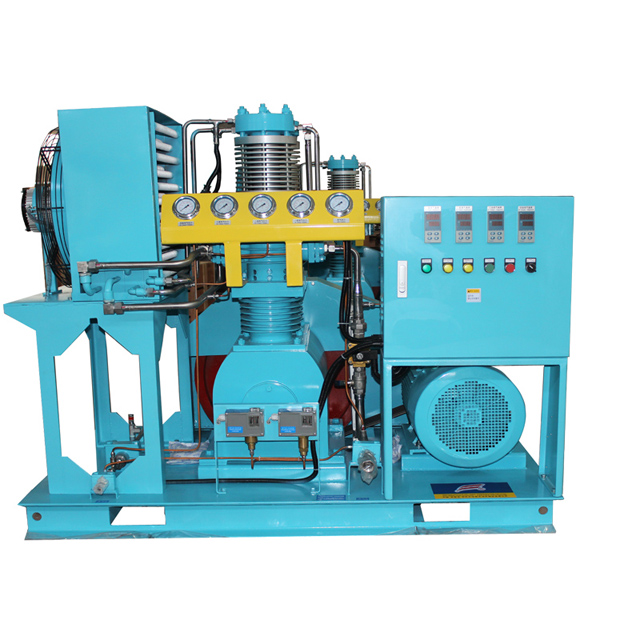Our company's series of high-pressure oxygen compressors are all oil-free piston structure, with good performance.
What is an oxygen compressor?
An oxygen compressor is a compressor used to pressurize oxygen and supply it. Oxygen is a violent accelerant that can easily cause fires and explosions.
When designing and using an oxygen compressor with care, consideration should be given to:
1. The compressed gas part is strictly prohibited from entering and contacting with oil. The cylinder is not lubricated with water and glycerin or oil-free lubrication. No contamination during oil maintenance. It must be cleaned with solvent prior to assembly.
2. Due to the high humidity with water lubrication, the temperature rises during compression, the oxygen from the humidity cabinet is corrosive, so the material exposed to oxygen should be corrosion-resistant and require good thermal conductivity and electrical conductivity. The cylinder is usually made of phosphor bronze, the piston is made of aluminum alloy, and the intercooler is a tube made of copper or stainless steel;
3. The average speed of the piston should be low, and the gas speed in the pipeline should also be lower than in the air compressor;
4. The exhaust temperature should not be too high, not higher than 100 ~ 120 ℃ when lubricated with water, and not higher than 160 ℃ when using the structure filled with poly-4 oil-free lubrication. The pressure ratio at each stage should not be too high.
In medicine, an oxygen compressor is a device used to assist the supply of oxygen to a patient. Its function is to compress the volume of the oxygen cylinder to store more oxygen for use.
How Piston Oxygen Compressor Works
When a piston compressor oxygen rotates the piston, the connecting rod drives the reciprocating motion of the piston. The working volume formed by the inner walls of the cylinder, the cylinder head and the top surface of the piston varies periodically. When the piston of the piston compressor oxygen begins to move from the cylinder head, the working volume of the cylinder gradually increases in. At this time, the gas is the intake pipe, and the intake valve is pushed open until the working volume becomes larger into the cylinder. The valve is closed; when the oxygen piston of the piston compressor moves in the opposite direction, the working volume in the cylinder decreases and the gas pressure increases. When the pressure in the cylinder is reached and is slightly higher than the exhaust pressure, the exhaust valve opens and gas is expelled into the cylinder until the piston reaches the exhaust valve and closes until the limit. The above process repeats when the piston of the piston compressor moves oxygen in the opposite direction. In a word, in the piston type compressor oxygen crankshaft rotates once, the piston reciprocates once, the cylinder in the process of intake, compression and exhaust, that is, one working cycle is completed in turn.
Advantages of Piston Oxygen Compressor
1. The piston compressor has a wide pressure range and the flow rate can reach the required pressure;
2. The piston compressor has high thermal efficiency and low power consumption per unit;
3. Strong adaptability, that is, the exhaust range is wide and will not be subjected to pressure levels, which can adapt to a wide range of pressure and cooling capacity requirements;
4. Maintainability of piston compressors;
5. Piston compressors have low material requirements, and more common steel materials, are easy to process and cost less;
6. The piston compressor has relatively mature technology, and has accumulated rich experience in production and use;
7. The unit system of the piston compressor is relatively simple.
Post time: Jan-19-2022


